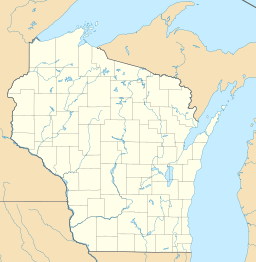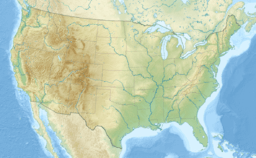Red Lake (Douglas County, Wisconsin) facts for kids
Quick facts for kids Red Lake |
|
|---|---|
| Location | Douglas County, Wisconsin |
| Coordinates | 46°10′48″N 91°45′53″W / 46.18000°N 91.76472°W |
| Basin countries | United States |
| Surface area | 258 acres (104 ha) |
| Max. depth | 37 ft (11 m) |
| Shore length1 | 3.5 mi (5.6 km) |
| Surface elevation | 1,063 ft (324 m) |
| 1 Shore length is not a well-defined measure. | |
Red Lake is a beautiful natural lake located in Douglas County, Wisconsin, in the United States. It is a peaceful spot known for its clear waters and natural surroundings. This lake is a great example of the many important water bodies found across the world.
Contents
What is Red Lake?
Red Lake is a body of fresh water that is completely surrounded by land. It is much larger than a pond but smaller than an ocean. Lakes like Red Lake are important parts of our planet's water system. They provide homes for many different plants and animals.
Where is Red Lake Located?
Red Lake is found in the northern part of the United States. Specifically, it is in Wisconsin, a state known for its many lakes and forests. The lake is located within Douglas County, which is in the northwestern part of Wisconsin. Its exact position helps scientists and visitors find it easily.
How Big is Red Lake?
Red Lake is a medium-sized lake. It covers an area of about 258 acres, which is roughly the size of 195 football fields! The deepest part of the lake goes down about 37 feet. This is about as tall as a three-story building. The shoreline, which is the edge of the lake, stretches for about 3.5 miles. This is a nice distance for walking or exploring. The lake sits at an elevation of 1,063 feet above sea level. This means it is quite high up compared to the ocean.
Why are Lakes Important?
Lakes like Red Lake play a very important role in nature and for people. They are vital for several reasons:
- Homes for Wildlife: Lakes provide a habitat for many types of fish, birds, insects, and other animals. They are also home to various water plants.
- Water Supply: Many communities rely on lakes for their drinking water. The water is cleaned and then sent to homes and businesses.
- Recreation: Lakes offer many fun activities like fishing, boating, swimming, and kayaking. People enjoy visiting lakes for relaxation and outdoor adventures.
- Climate Regulation: Large lakes can affect the local weather. They can make nearby areas cooler in summer and warmer in winter.
- Natural Beauty: Lakes add to the beauty of our landscapes. They are often popular spots for photography and enjoying nature.
Fun Facts About Lakes
- The deepest lake in the world is Lake Baikal in Siberia, Russia. It is over a mile deep!
- Some lakes are so big they are called "inland seas," like the Caspian Sea.
- Lakes can be formed in many ways, such as by glaciers, volcanoes, or even by rivers changing course over time.
- The study of lakes and other freshwater bodies is called limnology.



